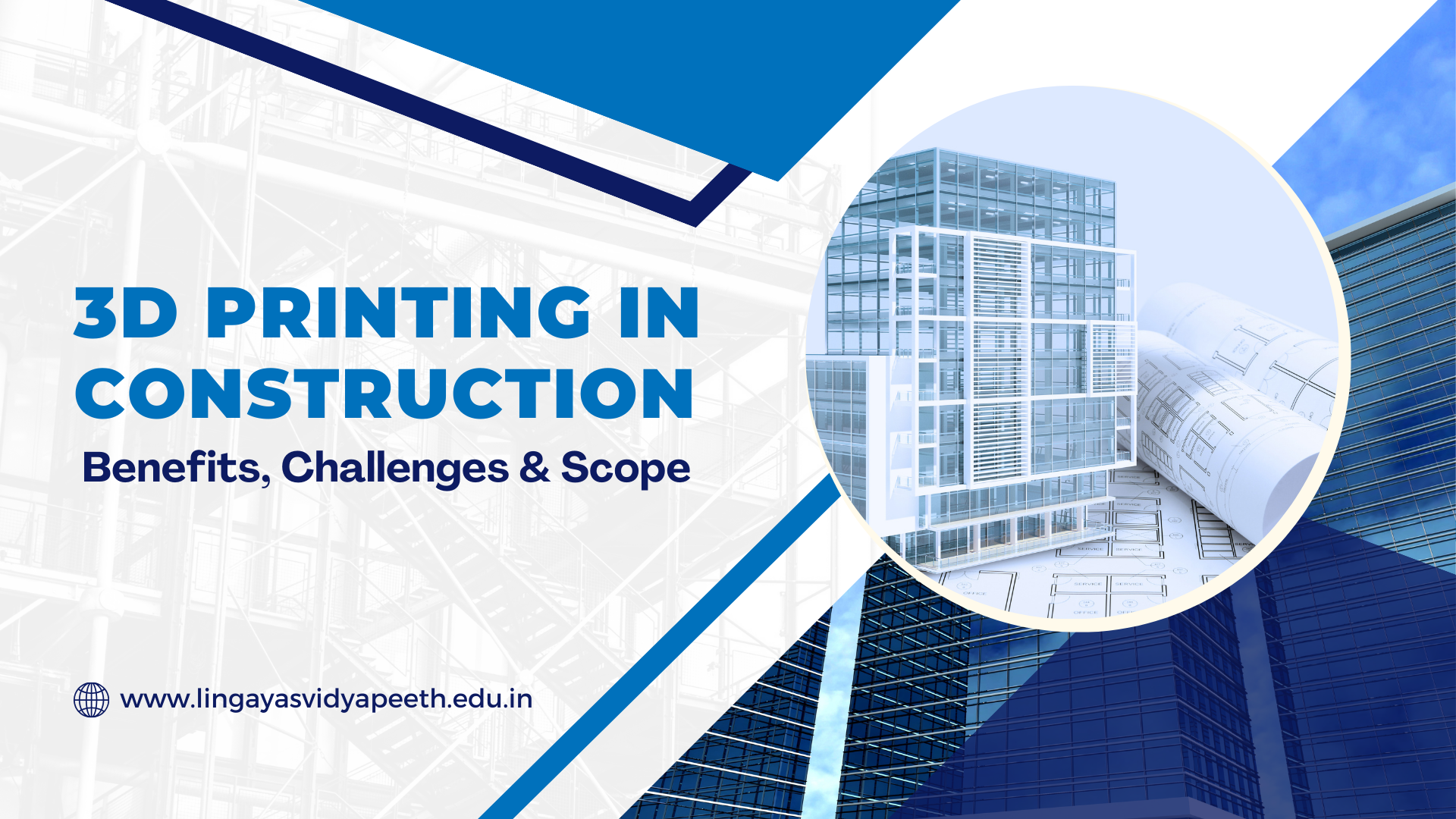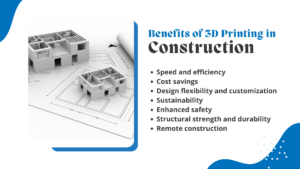
Home » 3D Printing in Construction: Benefits, Challenges & Scope

The utilization of 3D printing in construction is revolutionizing the industry, offering innovative solutions for rapid and cost-effective building processes. This technology enables the creation of intricate architectural designs and customized building components with precision and efficiency.
From constructing entire buildings to producing intricate details, 3D printing is reshaping the future of construction by streamlining processes, reducing waste, and unlocking new possibilities for architectural creativity and sustainability. The B.Tech & M.Tech Civil Engineering program at Lingayas Vidyapeeth covers essential design and technical syllabus crucial for civil engineering careers.
3D printing in construction utilizes large-scale printers to fabricate building structures layer by layer, often using materials like concrete. It offers rapid and cost-effective construction of complex designs, minimizing waste and enhancing efficiency.
The adoption of 3D printing in construction offers a multitude of advantages that can redefine the industry’s approach to building:

Seismic Reliability Protect Critical Structures
With the rising utility of 3D printing in construction, global markets have the potential to boom substantially. Following are the scope of 3D printing in construction:
Conclusion:
As the construction industry faces increasing pressure to deliver projects faster, cheaper, and more sustainably, 3D printing has emerged as a game-changing technology with the potential to address these challenges and revolutionize the way we build. From efficiency and cost-effectiveness to design freedom and sustainability, the importance of 3D printing in construction cannot be overstated.
You should pursue a degree in civil engineering at Lingaya’s Vidyapeeth, which is one of the leading Top Colleges in Faridabad for B.Tech Civil Engineering & M.Tech Civil Engineering and for its renowned faculty, state-of-the-art facilities, and industry-aligned curriculum. With a focus on innovation, sustainability, and practical application, Lingaya’s University prepares you to tackle real-world challenges and make a meaningful impact in the field of civil engineering.
From
Dr. Divyashree
Associate Professor & Head
Department of Civil Engineering
Lingaya’s Vidyapeeth
Best Civil Engineering College in Faridabad
RECENT POSTS
CATEGORIES
TAGS
Agriculture Agriculture future AI Architecture artificial intelligence Bachelor of Commerce BA English BA Psychology BTech AIML BTech CSE BTech cybersecurity BTech Engineering Business management career Career-Specific Education career guide career option career scope Civil engineering commerce and management Computer Science Computer science engineering Data science degree education Engineering Engineering students English Literature english program Fashion Design Fashion design course Higher Education Journalism journalism and mass communication law Law career Machine Learning mathematics MBA MBA specialization Mechanical Engineering Pharmacy Psychology Research and Development students
University Address: Nachauli, Jasana Road, Faridabad, Haryana
For Admissions :
Toll Free: 1800-120-4613
Mobile : 8447744303 | 8447744304 | 8447744306 | 8447744309
8700003974 | 8700003411 | 8700003749
Address: C-72, Second Floor, Shivalik, Near Malviya Nagar,
Above HDFC Bank, New Delhi 110017
Landline No. - 011-46570515 / 45138169 / 41755703
Mobile No. - +91-7303152412 / +91-7303152420 / +91-9311321952
Jagmani Kutir, Ground Floor, Road No-1, Rajeev Nagar,
Near Darbar Marriage Hall, Patna-800024, Bihar
Contact No: 9818352069/ 8130120095
Mail: kanhaiya@lingayasvidyapeeth.edu.in
Copyrights © 1998 - 2025 Lingaya's Vidyapeeth (Deemed To Be University). All rights reserved.
It is important to note that the following email IDs and domains are fraudulent and do not belong to our university.
LV only conducts physical/online verification of any document related to examination on the following email id: